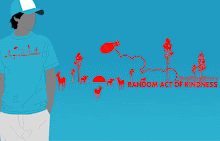
During its fleeting summer, this inhospitable land plays host to some of the greatest wildlife spectacles on earth. Millions of pairs of penguins, albatrosses, petrels and other sea birds breed in the region; five species of seal are regularly observed hauled out on ice floes; orcas, humpback and minke whales are often encountered feeding on the ocean’s rich pickings, adding to the impressive list of marine mammals. The summer climate is often surprisingly mild with temperatures above freezing and the long hours of daylight mean that wildlife viewing is possible almost any time.
We would argue that it’s impossible to describe the scenery of this continent in a single word, but ‘breathtaking’ comes close! This immense landmass lies engulfed in snow and ice, while dramatic alpine ranges are cut through by immense glaciers that spill out into a coastal maze of islands, inlets and waterways. These are choked with ice – from bergy bits to immense tabular bergs as big as islands. The exquisitely sculpted shapes and hues of aquamarine inspire the imagination and provide perfect photographic moments.
The world’s fifth largest continent, Antarctica covers an area of roughly 14 million square kilometres, most of which is blanketed by a vast permanent ice sheet, averaging 2000 metres in thickness. While ‘Antarctica’ is sometimes used to mean just the continent itself, the Antarctic region comprises a very much larger area of ice shelves, seas and islands off the coast of South America and Australasia.
The wildlife-rich Antarctic Peninsula and South Shetland Islands are reached from South America, and being the most accessible parts of the continent and are the focus of many expedition voyages. With a fabled history thanks to Shackleton’s trek across its glaciers and an abundance of fauna, South Georgia is a must for many intrepid travellers.
The Weddell Sea region hugs the peninsula and is home to Emperor Penguins nesting on the frozen oceans; little wonder that this area is known as ‘iceberg alley’.
Dominated by an ice shelf the size of France, the Ross Sea region is inextricably linked to the golden age of exploration. The historic huts at Terra Nova Bay, Cape Evans and Cape Royds stand as monuments to Scott and Shackleton’s heroic expeditions. This area also boasts one of Antarctica’s most perplexing natural assets, the Dry Valleys, where no rain has fallen for at least 2 million years. Considerably more remote and inaccessible than the Peninsula, this is an area of dense pack ice most commonly reached from Australasia.


